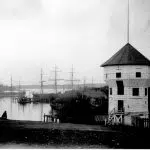
Money laundering report a wake-up call for Canada, but some provinces skeptical
VANCOUVER — The authors of a report that found $47 billion was laundered across Canada last year debated whether to include a graph that indicated Alberta, Ontario and the Prairies were hotspots for dirty money, says the lead writer.
Maureen Maloney said her expert panel used the best mathematical model available to reach the estimates, but it’s more reliable at a national level than a provincial one, so they questioned whether to publish the figures.
“But we thought, ‘No, we need to do this, because people need to know it’s not just a B.C. problem,’ ” said Maloney, the province’s former deputy attorney general and a public policy professor at Simon Fraser University.


